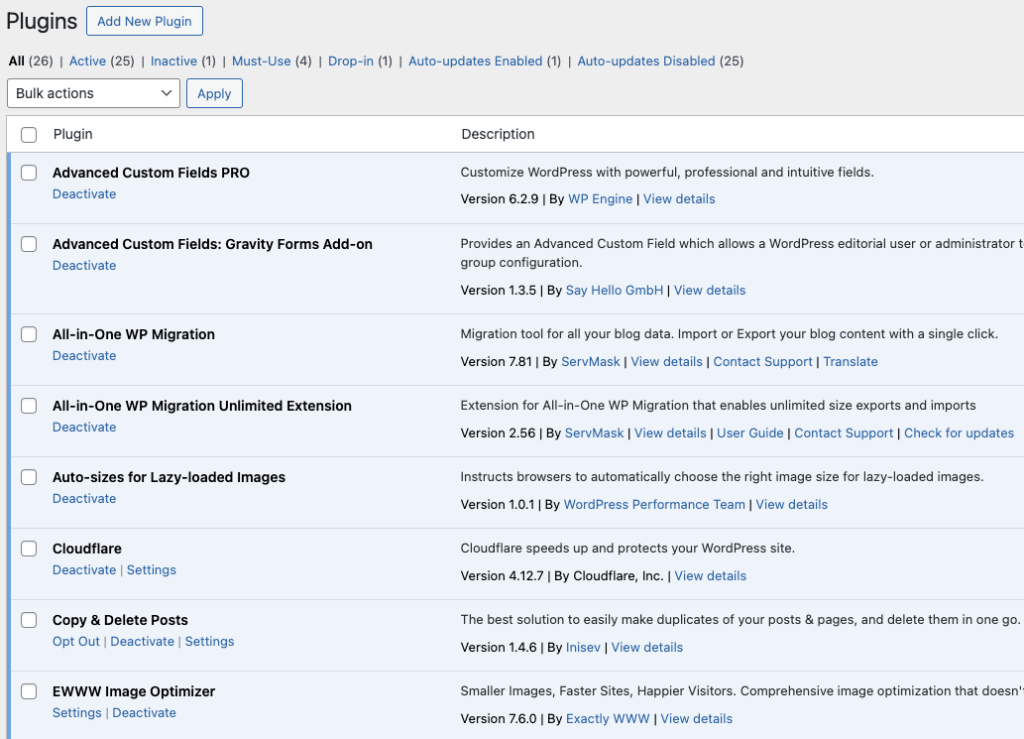Redesigning a WordPress website can be a transformative step for any business looking to enhance its online presence. However, it’s essential to approach this process strategically to ensure that the redesign boosts your site’s effectiveness without causing disruptions or losing valuable data. Here are the top ten tips to consider before embarking on a WordPress website redesign.
Understand the structure of your content
Before making any changes, it’s crucial to understand the current structure of your content. This understanding will help you identify which parts of your website are most visited and interacted with by your audience.
Knowing your content structure allows you to maintain the integrity of successful elements while identifying areas that need improvement. It ensures that critical content remains easily accessible and that the new design enhances the user experience around it.
Check your website’s codebase
Reviewing the existing website code is vital before starting a redesign. This step can help you identify outdated or inefficient coding practices that might affect your website’s performance.
Clean, updated code free of bloat is essential for website functionality, speed, and SEO. Ensuring your code is modern and efficient can prevent issues post-redesign and improve your site’s compatibility with new plugins and technologies. Be mindful of older website themes, as they typically contain a lot of bloated, unnecessary code that can affect speed.

Audit your plugins
WordPress plugins add functionality but can become outdated or redundant. Before a redesign, conduct a thorough audit of all plugins. Do you need all of them? Which are essential?
This WordPress website redesign plugin audit streamlines your website’s functionality by eliminating unnecessary plugins, which can slow down your site and pose security risks. It also ensures compatibility with the latest WordPress version and other plugins. Many times with a website redevelopment, functionalities like forms, a forum, or job application plugins are no longer needed or have been replaced by other external services.
Use a staging site
Implementing changes directly on a live website can lead to significant disruptions. Setting up a staging site for your redesign is a safer approach.
A redesigned staging site allows you to test changes without affecting the live website. This environment is perfect for avoiding downtime and testing new features or designs before they go public. Making changes and final touches keeps the environment separate and allows you to “push” forward all new changes and corrections to the live environment.
Examine every aspect of your design
When planning a redesign, it’s essential to scrutinize every element of your existing design to understand what needs change or improvement.
This comprehensive website redesign examination ensures all design elements serve a purpose and contribute to a cohesive user experience. It helps create a balanced, functional website design that aligns with user expectations and business objectives.
Backup your old website
Always back up your entire website before starting the redesign process.
Website backups ensure you have a recoverable copy of your website should anything go wrong during the redesign. This safety net allows you to restore your site to its original state if needed. Once launched, website backups should be done regularly, if not nightly. A good agency will have WordPress website maintenance packages to take care of this for you at affordable prices.
Benchmark your current performance metrics
Understanding your current website’s performance is crucial before starting a redesign. Metrics you likely or hopefully have set up in GA4, including page load times, bounce rates, and user engagement rates, carry valuable historical information to consider.
Benchmarking these metrics provides a baseline against which to compare after your redesign. It helps you see whether the changes have positively impacted your site’s performance and user experience.
Determine your website redesign goals
Clearly define your redesign’s goals. Common goals include improving user experience, increasing conversions, or refreshing the brand.
Having clear goals helps guide the redesign process and ensures that every change contributes towards achieving these objectives. It also helps measure the success of your redesign efforts.
Define your branding & messaging
Ensure that your new design aligns with your branding and messaging. Consistency across all channels is key to reinforcing your brand identity.
A redesign offers a unique opportunity to strengthen your brand perception by creating a visually consistent experience that resonates with your audience and enhances brand loyalty.
Define your buyer persona(s)
Understanding your target audience is critical before redesigning your website. Define detailed buyer personas to tailor the design and content to meet their needs.
Designing with specific buyer personas in mind ensures that the website appeals to your ideal customers and meets their expectations, ultimately leading to higher engagement and conversion rates.
Protect your search-engine-optimized pages
Finally, during your redesign, make sure to protect your SEO gains. Identify pages with high traffic and good rankings to ensure their SEO value is not compromised.
Preserving the SEO efforts on high-performing pages ensures rankings and traffic are not lost after redesigning. This protection involves maintaining URL structures, optimizing new content, and properly redirecting deleted pages.
Before the WordPress rebuild
Embarking on a WordPress website redesign with an experienced agency like Perfect Afternoon offers numerous benefits. By leveraging their expertise, you ensure every aspect of your redesign is meticulously planned and executed, aligning with user expectations and your business goals.
Perfect Afternoon brings a strategic approach to website redesign, enhancing functionality, preserving SEO gains, and refining your brand’s digital presence. This precision mitigates risks and maximizes the return on your investment.
By following these ten tips, you can ensure your WordPress website redesign is successful, meets user expectations, and achieves your business goals. Considering these factors before starting your redesign will help minimize risks, preserve key functionalities and SEO, and ensure a smooth transition to a fresh, more effective website.
Complete the Free SEO Audit form to start your optimization journey.
*An old person’s thoughts are made bearable to read with AI assistance.

